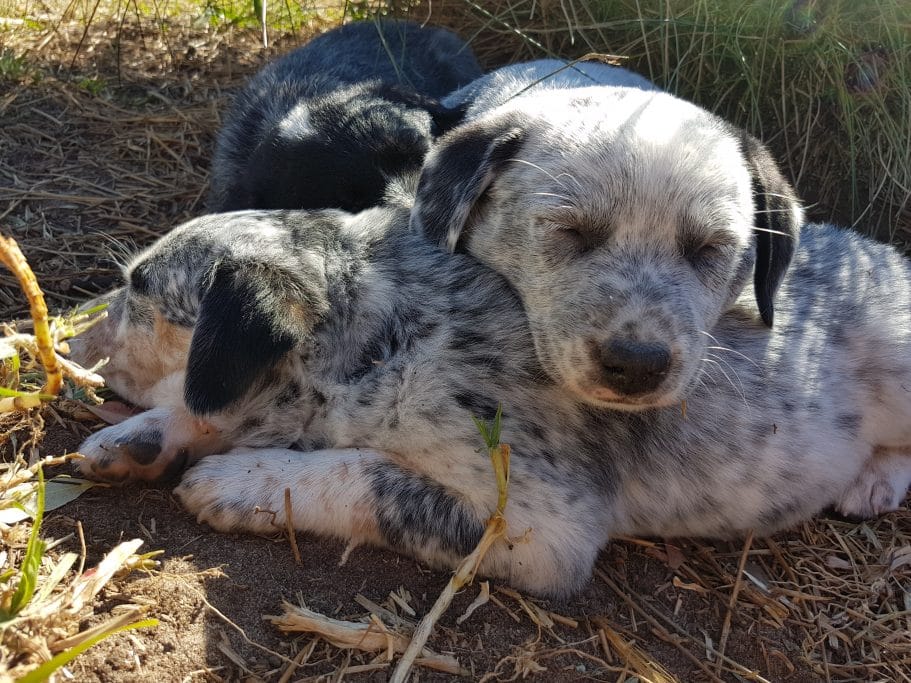
OWNING A DOG IS NOT FOR EVERYONE
Deciding to get a dog is a truly exciting moment in the life of a person or family. It is also one of the most significant. Unfortunately, some people make the mistake of confusing a dog with a toy, and they get a dog as an impulse purchase to satisfy the pleas of their children, without thinking through the very significant and permanent consequences of dog ownership.
These purchases very often end badly, for both the owner and the dog. Once the novelty of the dog wears off, the children often turn their attention to other ‘toys’. The adults meanwhile are left with the daily responsibility of feeding, exercising and socialising the dog. And if they weren’t particularly interested in the dog to begin with, this responsibility can quickly wear very thin. The end result in many of these cases is that the dog is relegated permanently to the backyard, sometimes even tied up, without access to the family, or without regular exercise or attention. The family is burdened with a responsibility they wish they didn’t have, and the dog is miserable and confused.
Are we trying to turn you off getting a Doggie Rescue dog? Absolutely not! We just urge you to think very hard about whether having a dog is going to be the right decision for you and your family. Getting a dog because the kids want one is generally not a good reason, unless the parents truly want one too. And it’s not the sort of decision that you can make, thinking, ‘Well, let’s try it, and if it doesn’t work, we can always get rid of it.’ Getting a dog is not like growing a moustache -you can’t just shave it off again if you don’t like it!
A Dog is For Life
In many ways having a dog is like having a child. They require your time, your attention, your money and your affection. A dog can live for up to fifteen years or longer, so it’s very much a long-term commitment. That is why we also require all adopters to be permanent residents of Australia. As the saying goes, a dog is for life! It is important that everyone in the family understands and accepts this responsibility, right up front.
WHAT ALL DOGS NEED
Dogs will vary in terms of the amount of attention they require. However, at the bare minimum, every dog needs the following:
– Daily exercise, either around the local streets or ideally in a park or leash free area. A dog that is well exercised will be much more contented and happy during those times when they are left alone, and so won’t tend to cry or bark.
– Twice daily food and clean water
– Shelter from the weather i.e. sun, wind and rain
– Their own doggie bed, inside the home (garage or laundry is fine)
– Annual visits to the vet for vaccination, heartworm and check up
– Regular worming and health checks
– Safe accommodation, such as boarding or home sitting, when the family goes on holidays
– Lots of love and attention!
For experienced dog owners, this checklist is well known and understood. But if you are contemplating getting your very first dog, it is important that you are comfortable with, and can commit to providing ALL the items of the list. If not, then it may not be the right time for you to consider getting a dog.
DOGGIE RESCUE DOGS DESERVE THE BEST OF HOMES
Many of the dogs that come to Doggie Rescue haven’t had the best of starts. Some have been physically abused, many have been physically and emotionally neglected, and many of them have been virtually abandoned in backyards to live lonely lives, until the owners finally tire of them and dump them – often at pounds to be killed, or even worse, in streets or parks to fend for themselves.
While we believe that all dogs deserve a great home, this is especially true for Doggie Rescue dogs, so we will always try to look for home environments that we think the dog will enjoy and feel comfortable in.
Dogs are Most Comfortable Sleeping Indoors
Occasionally people looking to adopt a dog will explain that the dog will be kept permanently outside, including sleeping in a kennel or an outdoor bed. Other people will say that they intend to keep the dog in a pen or enclosure.
For Doggie Rescue dogs, we don’t think that this is the best environment for them, Dogs that are kept permanently outside while the family life is going on inside have little chance of integrating with the family. Dogs that are continually subjected to the cold by sleeping outside, particularly in winter are more prone to health problems, as well as the daily misery of being cold and lonely.
For these reasons, we look to place the dogs in homes where the dog will spend at least some part of the day inside with the family, and where he sleeps inside the home (a laundry or garage is fine).
CREATING A SAFE ENVIRONMENT FOR YOUR DOGGIE RESCUE DOG
Security – Check your Fences, both over them and under them!
A good number of the dogs at Doggie Rescue ended up at the pound simply because they escaped from home, (often habitually!), so good security is absolutely paramount.
The fence or gate that might be adequate for keeping in a child may be completely inadequate for keeping in a dog, especially the smaller breeds. Motivated dogs can find all sorts of places to escape from the property, especially when left alone, so it is critical that you do a thorough inspection of the property BEFORE bringing home the dog.
Make sure fences are high enough
A common way for dogs to escape is by jumping or climbing over the fence. It will of course vary from dog to dog, but generally a fence lower than one metre is likely to be a potential escape route to many dogs. Low fences are generally fine for very small breed dogs that don’t jump or climb – such as Maltese or chiahias. Doggie Rescue can help advise you on a suitable choice.
Check spaces between fence railings
Some fences such as the wrought iron and metal ones, are fine for containing large dogs like Labradors and German Shepherds, but are completely unsuitable for smaller bodied dogs, who simply slip straight through between the bars. These fences can be made secure by the addition of mesh or chicken wire, laid over the fence posts.
Check for gaps under the fences
The other place dogs often escape, and which people tend not to think about, is the gaps that exist UNDER the fences. Even small gaps can be quickly expanded via the efforts of a determined foxie or terrier. The best way to look for these gaps is to literally get down on all fours, and crawl around the boundary of your property. The most likely spots are gaps between the fence and the ground, especially with colour bond type fences. Very often these gaps can be plugged with bricks or stones. Look also for gaps between a fence and a gatepost, or at corners where two fences meet.
Restrict access under the house
You should also check that the dog won’t have access to get under the house, or if he does, that this access doesn’t provide an escape tunnel to the street. Lattice panels are a good way to plug these gaps.
Check your property BEFORE you choose a dog
Doing a thorough check of your property BEFORE you choose a dog will help you to select a dog that is suitable for your home. It will also minimise any chance of the dog escaping your property. At the very least, an escape may cost you an expensive and inconvenient trip to the pound to collect him. At the worst, it could end in a tragic end for your dog, if he is hit by a car, something you want to avoid at all costs.


